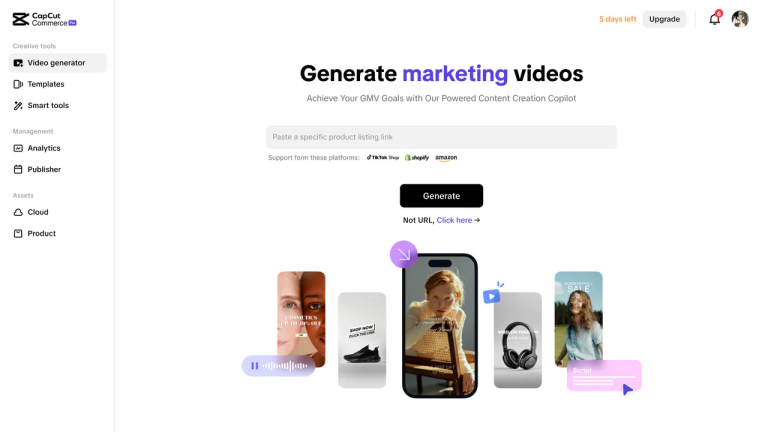Streaming platforms have dramatically transformed how we interact, communicate, and form communities in the digital age. From video game live streams to virtual concerts and podcasting, platforms like Twitch, YouTube, and Facebook Live have created new ways for people to share experiences and engage with content in real-time. These platforms go beyond entertainment; they now serve as powerful tools for education, collaboration, and connection.
The interactive nature of live streaming has shifted the traditional dynamic between content creators and audiences, fostering a more personal and communal digital environment. As technology evolves, the influence of streaming platforms will only grow stronger, reshaping how we socialize and consume content. This evolution highlights the blending of media consumption and social interaction, where users aren’t just watching but are also actively shaping the content. From one-way broadcasts to dynamic digital dialogues, the change is reshaping the cultural fabric of online interaction.
The Rise of Interactive Communities
One of the most remarkable impacts of streaming platforms is the rise of highly interactive digital communities. Unlike traditional media, streaming allows for instant viewer feedback through live chats, donations, and reaction tools. This real-time engagement encourages a two-way conversation, making viewers feel like active participants rather than passive consumers.
Streamers often develop loyal fan bases who not only watch regularly but also interact with each other and the creator. These micro-communities provide a sense of belonging, particularly among niche interests such as speedrunning, creative arts, or esports commentary. In turn, the constant feedback and viewer interaction help content creators improve and tailor their streams, resulting in more relevant and engaging content for their audiences. As communities grow, they often extend into forums, Discord servers, and even in-person meetups, strengthening bonds forged through shared virtual experiences.
Gaming and Esports: Streaming as a Social Hub
Gaming has played a significant role in the success and popularity of streaming platforms. Viewers don’t just watch gameplay; they learn strategies, discuss patch updates, and even adjust their own settings using tools like a cs2 sens converter, which are frequently referenced during live broadcasts and tutorials.
The chat interactions during esports tournaments or high-stakes matches create a shared atmosphere similar to watching sports in a bar. This communal experience extends beyond the game, building lasting digital friendships and even sparking collaborative projects among fans and streamers alike. The incorporation of team-based events, coaching sessions, and gameplay analysis strengthens viewer loyalty and deepens the connection between the gaming community and its creators. Esports has become not only a competitive field but also a cultural phenomenon largely powered by streaming.
Beyond Entertainment: Education and Real-Life Applications
Streaming platforms are no longer confined to gaming or entertainment. Educators, activists, and professionals are leveraging them to share knowledge and facilitate discussions. For example, live coding sessions, virtual language classes, and public Q&A events are now commonplace on platforms like YouTube Live and Discord stages.
The low barrier to entry allows experts to reach global audiences without the need for expensive infrastructure. In turn, viewers benefit from free or affordable access to quality content in areas like fitness, mental health, finance, and more. These streams often blend entertainment with instruction, keeping audiences engaged while delivering real value. As a result, the streaming format has become a versatile tool for skill-building, personal development, and professional networking across many disciplines. The ability to interact directly with content creators enhances learning outcomes and encourages deeper participation.
Influencers, Brands, and Monetization Models
Streaming platforms have also revolutionized how individuals and brands connect with their audiences. Influencers on Twitch or YouTube Live now partner with companies for sponsored streams, product placements, or exclusive promotions. Brands benefit from authentic engagement, while streamers gain new revenue opportunities beyond traditional ads.
This shift has democratized content monetization. Creators with modest followings can still earn income through subscriptions, donations, affiliate links, or merchandise sales. More importantly, this economic model is built on trust and community loyalty, rather than viral reach alone. It empowers creators to maintain creative independence while still making a sustainable living, encouraging innovation and long-term audience investment. As a result, brands are increasingly integrating streaming into their marketing strategies to foster genuine engagement and visibility.
Technological Evolution and the Future of Streaming
The rapid advancement in streaming technologies, such as lower-latency protocols, 4K resolution support, and AI-driven moderation tools, has elevated both creator and viewer experiences. Augmented reality (AR) overlays, real-time polls, and dynamic alerts further increase viewer immersion and participation.
As virtual reality (VR) and the metaverse gain traction, streaming platforms may evolve into fully immersive environments. Imagine attending a concert or classroom in VR while interacting with peers as digital avatars in real-time. This convergence of media, tech, and social interaction will define the next generation of connectivity. Furthermore, the integration of blockchain and decentralized networks could give users more control over their data and monetization strategies, driving a more user-centric streaming experience. These trends point to a future where digital presence is not only immersive but also secure, personalized, and decentralized.
Conclusion
Streaming platforms are undeniably reshaping the way we connect online. By enabling real-time interaction, community-building, and democratized content sharing, they have expanded far beyond their entertainment roots. Whether you’re a gamer, educator, brand, or casual viewer, streaming offers a versatile and impactful way to engage with the world.
As technology continues to evolve, so too will the possibilities for connection. The streaming revolution is not just a trend—it’s a fundamental shift in how we communicate, learn, and relate in the digital age. Embracing these changes will help individuals and organizations remain relevant, innovative, and connected in an increasingly digital-first world. As streaming becomes more integrated into everyday life, its influence will continue to grow, shaping culture, education, and communication for generations to come.
Source: Fapello UK






